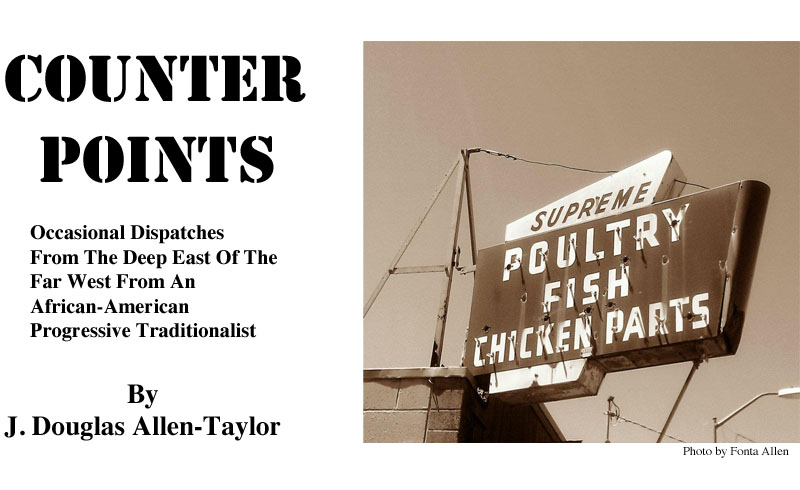|
|
THE QUICK-TRIGGER "SOLUTIONS" TO OAKLAND'S VIOLENCE PROBLEM
There is a depressing predictability to the calls for “something must be done” about violence in Oakland. Some horrific new event will trigger it. Multiple murders over a short period of time. The shooting death of a young child. The numbers of murders reaching the century mark in a single year. Oakland will suddenly, once more, turn attention to the culture of violence in our city, grow outraged, and demand immediate action. Vigils and meetings will be held. City and police officials will propose new solutions or polish off underused or discarded ones, which columnists and editorial writers will immediately either champion or criticize, with equal volume and vehemence. The magic cure offered most often is “more police,” although sometimes the actual number of officers needed to solve Oakland’s violence problem is set out in specifics. During the first years of the Ron Dellums mayoral administration, the number of needed police was put at 800, which was the full complement authorized at that time under our violence prevention Measure Y. When Mr. Dellums and then-Chief Wayne Tucker bent the Measure Y rules a bit to get the police allotment to that number, however, many in the public bumped the needed number immediately up to 1,000 and more. Presumably, for some people in Oakland, we will never have enough police. Meanwhile, last year, the called-for solution to cure Oakland’s violence alternated between a youth curfew and gang injunctions. This month, after a bloody weekend of 15 shootings, including four murders in a single day, City Councilmember Larry Reid called for Mayor Jean Quan to declare a state of emergency, giving the city the ability to invoke extraordinary powers to clamp down on crime. (“Larry Reid, Vice Mayor In Oakland, Calif., Wants State Of Emergency Declared For City After String Of Shootings” CBS News January 14, 2013) Following a Monday morning International Boulevard press conference in which Ms. Quan and Police Chief Howard Jordan said that a state of emergency declaration was not in order (“Oakland Police Chief: 90% Of Violent Crime Committed By 2 Groups” Oakland Local January 15, 2013, Tribune columnist Tammerlin Drummond disagreed. “I can't think of one good reason,” Ms. Drummond wrote in a January 14 column, “why Oakland shouldn't use its local emergency ordinance—and everything else at its disposal, for that matter—to help get control of the killing.” Myself, I can think of several reasons, the first of which is one possible outcome Ms. Drummond asserts could come of such an action. Declaring an emergency, she says, “followed by a public request for help to [Governor Jerry] Brown could bring more pressure on the governor” to provide state aid to the city. Such aid, she suggests, could include bringing the National Guard into Oakland. What possibly could go wrong with bringing in troops unfamiliar with the city or its culture or its residents, armed with assault rifles and artillery, to patrol our streets? Mr. Brown immediately threw out Ms. Drummond’s state aid suggestion, telling Sacramento reporters that Oakland “has to solve its own problems,” adding that, “I wish you well.” Meanwhile our good friend, San Francisco Chronicle columnist Chip Johnson criticized the failure of Ms. Quan and Mr. Jordan because they have “offered no new solutions and showed no willingness to change their approach to the problem” (“Oakland Leaders Have Lost Grip On Violence,” San Francisco Chronicle January 15, 2013). After taking a stroll around the neighborhood of Monday’s press conference—64th and International—and talking to a handful of residents along the way, Mr. Johnson comes to his own conclusion about the state of affairs in that part of the city. “If you live in East Oakland,” he writes, “you can't presume you're safe when you're on a public sidewalk. The safest, most reasonable assumption is that when there are people in the street making noise and messin' with other people, they're armed.” Mr. Johnson, who apparently knows very little about the city he’s paid by the Chronicle to write about, would have his readers believe that all of East Oakland is like a video game, with residents constantly under attack, 24-7, running from cover-to-cover all day as we try to make our way through a war zone without getting shot. While there are certainly dangerous pockets in Oakland that is not the case, even in the most violent areas of the Deep East or the northwestern corner of the city. There is a crisis of violence in Oakland, of that there can be no doubt. While the level of violence in the city trends up or down depending on various factors, including the city’s own actions, the level remains dangerously and depressingly higher than in surrounding communities. Hyping the situation won’t help. Nor will advancing solutions without first determining the nature and cause of the problem. First and foremost we need to ask ourselves: why is Oakland so violent? Right now, we don’t seem to know. And until we answer that question, we will continue to flail at finding a solution to a problem which we do not understand.
|
